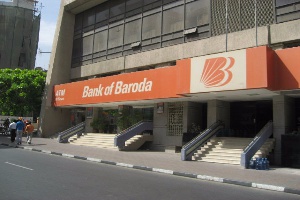 The AI and APR released by the BoG indicate that Bank of Baroda, others charge the lowest interest
The AI and APR released by the BoG indicate that Bank of Baroda, others charge the lowest interest
Stanbic Bank joined Bank of Baroda and Standard Chartered Bank to become the banks charging the lowest interest of loans in both household and business sectors, according to the latest Average Interest (AI) and Annual Percentage Rates (APR) released by the Bank of Ghana which captured figures up to November 30, 2017.
However, a careful study of the data indicates that interest rates on loans have been generally coming down in 2017 albeit slowly despite 5.0 percentage drop in the Bank of Ghana’s lending rates.
Barclays Bank also charged very low rates on loans for enterprises.
The figures indicate that Bank of Baroda and Standard Chartered Bank are for the 10th time running this year continued to offer the least competitive lending rates to customers in all the sectors.
The two banks offered rates of 22.0 and 22.0 percent respectively to borrowers in agric, commerce, manufacturing and construction sectors.
They again offered the least lending rates of 22.0 and 22.0 percent respectively to household consumers and enterprises. Stanbic Bank charged a rate of 24.7 percent for both household consumers and businesses. Whilst Barclays Bank offered 34 percent for retail consumers, it charged 23.6 percent interest for all businesses.
uniBank and Premium Bank offered the most expensive loan rates for enterprises in commerce, construction and manufacturing respectively. They charged 36.0 and 33.0 percent respectively in these sectors. They also offered rates of 34.9 and 33 percent on household consumer loans.
With regard to deposits, Bank of Baroda offered the best rate of 14.5 percent followed by Premium bank with a rate of 13.5 percent.
In contrast, Stanchart and Energy Bank paid the least deposit rates of 5.4 and 5.7 percent respectively to clients.
According to the Bank of Ghana, the average deposit rate as at November 30 was 10.2 per cent, representing a drop of 0.2 percent, compared with end-October figure of 10.4 percent. The average deposit rate had remained the same for both September and October 2017.
Computed on a year-to-date basis, the end-November figure represents a decrease of
1.7 per cent. At the start of the year (end-January), the average deposit rate was 11.9
percent.
The APR is the true interest rate banks and non-bank financial institutions charge the public on loans and advances. It reflects the true cost of borrowing and includes charges and commissions levied by banks. Average interest paid on deposits is the average interest paid by banks on deposits over the period.
In all, 31 banks were captured.